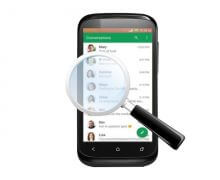Mobile Worker Apps Seen as an Emerging Market

Your typical mobile app development company can create just about anything for iOS, Android and even Windows Phone. Most of the apps being developed right now are either for business-to-business (B2B) or business-to-consumer (B2C) needs. But word on the tech street is that there is a quickly emerging market for business-to-employee (B2E) apps.
B2E apps, also known as mobile worker apps, are bridging the gap between mobility and the software employees use to do their jobs. The concept itself is nothing new. Companies have been pursuing mobility for their employees since the earliest days of the BlackBerry and PDA. The difference now is the raw power of the average smartphone.
An employee armed with a late-model phone and the right kind of app can do amazing things. There is no longer a need for workers to be tied to office computers or, while in the field, forced to get things done by talking on the phone with an office worker sitting behind a computer. In short, mobile worker apps have transformed web app development into something that directly benefits workers in the field.
An Emerging Market Gets Stronger
A small app development firm just starting out may not be too involved with the B2E world, but that does not mean demand isn’t there. A ccording to Nearshore Americas , nearly half of the 300 companies surveyed recently by Frost & Sullivan reported having at least 11 different mobile apps used by workers in the field. Even more impressive, roughly 80% of the respondents said they plan to launch a new B2E app sometime within the next year.
Assuming the Frost & Sullivan sample accurately reflects business trends across North America, the results of their survey make it very clear that the B2E market is getting stronger. Companies are coming to realize that introducing mobility to the way they do things makes them more flexible, more adaptable, and better able to meet the needs of customers by getting workers out of the office and into the real world.
So what does this mean for the app development firm ? It means getting a handle on the emerging B2E market now so as to avoid being left out in the cold.
Key Segments Need to Be Identified
The best way to get in on any emerging market is to start by identifying key segments and then going after them. For example, what sectors are currently struggling with mobility? Within those sectors, what kinds of companies would benefit most from mobile worker apps?
One of the first that comes to mind is home healthcare. As we all know, the healthcare industry is one of only a small number of industries that seems immune from the normal ebbs and flows of economics. Even while most other industries were shedding jobs during the great recession, healthcare was adding them. Home healthcare has been a big part of that.
Creating robust mobile worker apps for the home healthcare industry would seem like a no-brainer for any app development firm looking to get in on the ground floor. Apps for home health aides would enable them to better manage client data and keep supervisors and caseworkers informed. Apps for companies that deliver home healthcare products such as oxygen and medical equipment would enable delivery drivers to enter transaction data in a real-time environment that is always accessible by the office.
Mobile worker apps are quickly becoming among the most demanded products in the software development arena. B2B and B2C are still important, but B2E is where many of the best new opportunities are emerging.



















